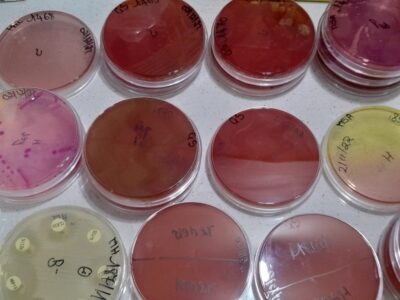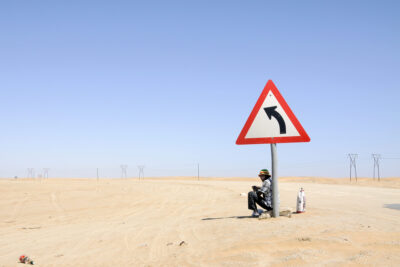Main content
Parkinson’s disease (PD) is a neurodegenerative disease which afflicts ageing individuals regardless of gender, ethnicity or geographic background. In recent decades, we have seen a steep increase in new numbers of persons affected by PD. In fact, PD is the world’s fastest growing neurological condition, which has led to the introduction of the term ‘Parkinson Pandemic’.[1] This rapid growth can be ascribed in part, but not wholly, to ageing of the worldwide population.[1] Importantly, the growth of PD persist even after correction for the ageing effect, suggesting that other factors are also at play. In fact, the question remains whether ageing per se is a sufficient cause of PD, because the disease appears to have been utterly rare prior to the year 1817, when the disease was described for the first time in London by James Parkinson, at a time when air pollution was becoming significant due to the industrial revolution.
People obviously didn’t live as long in those days, but even then there were enough elderly individuals to allow the disease to become manifest. Perhaps the ageing effect is merely the result of prolonged exposure to toxic chemicals in our environment, as we shall discuss later. Neither are better diagnostics a very good explanation, because the diagnosis of PD is established today as it was done two hundred years ago, namely based on a good interview and a proper neurological examination. The Parkinson Pandemic [1] affects Sub Sahara Africa (SSA) like everywhere else, but solid neuro-epidemiological data from SSA are scarce.[2] It begs the question whether the nature and magnitude of risk factors for PD are the same in SSA.
Various demographic and cultural factors contribute to a lesser visibility of PD in SSA. Delayed or missed diagnoses are common because of the low density of neurologists and limited access to neuro-diagnostics in SSA, which will slowly but steadily improve in the next decades. By necessity, other medical professionals have to take medical responsibility, but they understandably lack the professional training to reliably identify parkinsonism. In many SSA countries, most neurological conditions are not even treated by non-neurological disciplines such as internal medicine specialists and paediatricians, but by assistant medical officers (AMO’s)/clinical officers, healthcare workers who follow an abridged medical curriculum and run most of the healthcare in SSA. An example is the United Republic of Tanzania with one neurologist per eight to ten million inhabitants and six MRI scanners throughout the country.[3] Presently, eight percent of Tanzanian citizens have healthcare insurance and can afford access to neurological care, diagnostics and treatment. The cost of levodopa-carbidopa medication taken three times daily amply exceeds the average daily income of a Tanzanian. This medication is only available in the six major cities of the country, which may take several days of travel.
Due to better healthcare, nutrition and infectious disease control, life expectancy in SSA is increasing, and neurodegenerative disease (such as PD and dementias) are therefore being seen more often every year. There is, however, still a ‘treatment gap’ for PD with a majority of patients never seeing a neurologist.[2] Neurological conditions, especially movement disorders, bear a sociocultural stigma. [3,4] This causes diagnostic delay and a tendency to seek refuge in alternative medicine and spiritual healing methods. Finally, in various cultures in SSA, PD is regarded as a natural consequence of ageing rather than a disease.[4]
The aetiology of PD is a combination of intrinsic susceptibility and environmental risk factors. The genetic predisposition ranges from monogenic mutations (which often lead to young-onset PD) to genetic polymorphisms which raise genetic susceptibility to PD. Environmental risk factors include a range of exogenous toxins which by themselves can produce a PD phenotype, such as the party drug MPTP and pesticides. Pesticide use as a risk factor in PD has been extensively studied in higher-income regions of the world. For example, heat map studies performed in France, Canada and the USA have shown that PD is not evenly distributed across the country, but appears to be concentrated in clusters which in turn are tightly associated with the presence of farmland or vineyards and more intense use of pesticides. In keeping with this finding is the fact that farmers appear to have a significantly increased risk of developing PD. However, the raised risks are not limited to farmers but also affect people living in the immediate vicinity of farmland or vineyards where pesticides are used. It thus affects rural populations at large, presumably because pesticides contaminate food and water and spread via the air.[1]
Presently, 16% of the world’s citizens and its youngest population live on the African continent (one fifth of the world’s land surface), which drives up the pressure on food production.[5] Climate change in Africa comes with droughts, floods and erosion, challenging an already underpowered food production. In rural SSA, the majority of people are involved in farming at least part of their working hours and live at or near farming grounds. Education regarding pesticide use is minimal and knowledge regarding longer-term effects is lacking. Protective equipment is typically not available, and even when there is access, it is not used faithfully. Recent studies have in fact even questioned the efficacy of protective equipment in protecting against the toxicity of pesticides, so more work is needed to better protect those working with pesticides.
Organic vegetables grown with minimal pesticide usage are very rare, because the lower yield per acre makes organic farming less popular. ‘Agrovet’ stores are found down to the smallest villages, where farmers can buy pesticides and livestock medicine without restrictions. What is really disconcerting is that many toxic chemicals, which are associated with a clear risk of developing PD, and which have consequently been banned in more developed countries, are still being used on the African continent. For example, organophosphates, paraquat, rotenone, warfarin and arsenic are sold over the counter in 1 to 4 litre wholesale containers. In Tanzania, the local farmers’ cooperative has shopkeepers wearing dungarees and caps sponsored by a well-known pesticide brand.
The exposure to herbicides, fungicides and insecticides of the average SSA inhabitant is ubiquitous, but exact figures are not well known. Accidental intoxications (most commonly pesticides and kerosene) are in the top-10 of paediatric emergencies of a large referral hospital in Northern Tanzania.[7] Deliberate ingestion of such compounds is commonly seen in patients who attempt suicide and is associated with high mortality. Insidiously and unnoticed, more gradual exposure to pesticides crossing the blood brain barrier over several years is likely to co-occur in many individuals. Small epidemiological studies on the relation between PD and pesticide exposure in SSA exist, but larger-scale neuro-epidemiological data are lacking. At present, large-scale eradication programs for parasitic diseases (such as sleeping sickness, malaria, onchocerciasis and schistosomiasis) have not shown an association with PD, but the pre-symptomatic period might be too long to really answer this question.
If we extrapolate the epidemiological and in-vitro evidence of a causal link between pesticide exposure and PD and take into account improved life expectancy, we can expect a rise in numbers of PD patients in rural SSA. It goes without saying that a vast global region with a population at the lowest median age will lead to a very long exposure duration to environmental pesticides, so that a further surge in patients with PD can be expected.
An ongoing study in the Tanzanian referral hospital shows a striking percentage of early onset PD in age group below 50 years. A minority of patients has not grown up in farms or rural regions and not one patient grows or consumes organically grown vegetables. Further associations between PD and pesticide exposure in Tanzania are currently being studied. With the ‘PD Pandemic’ striking SSA, this could shed more light on the role of pesticides in PD.
References
- Dorsey ER, Sherer T, Okun MS, Bloem BR. The Emerging Evidence of the Parkinson Pandemic. 2018. Journal of Parkinson’s Disease 8: S3–S8 DOI 10.3233/JPD-181474
- Dekker MCJ, Coulibaly T, Bardien S, Ross OA, Carr J, Komolafe M. Perspective: Parkinson’s disease research on the African continent: obstacles and opportunities. Frontiers Neurol 19 Jun 2020, 11:512. DOI: 10.3389/fneur.2020.00512 PMID: 32636796
- Dekker MCJ, Urasa SJ, Howlett WP. Neurological Letter from Kilimanjaro. Pract Neurol 2017;0:1–4. doi:10.1136/practneurol-2017-001693
- Mshana G, Dotchin CL, Walker RW. We call it the shaking illness: perceptions and experiences of Parkinson’s disease in rural northern Tanzania. BMC Public Health. (2011) 11:219. doi: 10.1186/1471-2458-11-219
- Wikipedia: Africa. Available from: https://en.wikipedia.org/wiki/Africa [Accessed on May 27th 2022]
- Gapminder. Available from: https://www.gapminder.org/ [Accessed on May 27th 2022]
- KCMC Annual report 2019



















































